
International stocks have been a go-to staple for equity diversification by investors in the last few decades as the accessibility of equity markets outside the United States has increased. Prior to the ubiquitous adoption of exchange-traded products, domestic investors accessed the international markets primarily through mutual funds. In this note, we review the potential risks and benefits of one of the most widely utilized products for obtaining broad international exposure within one ticker—ACWX.
Investor interest in international stocks has perked up as of late but remain relatively muted compared to past five years of search term data as international stocks continue to underperform in the intermediate and long term.
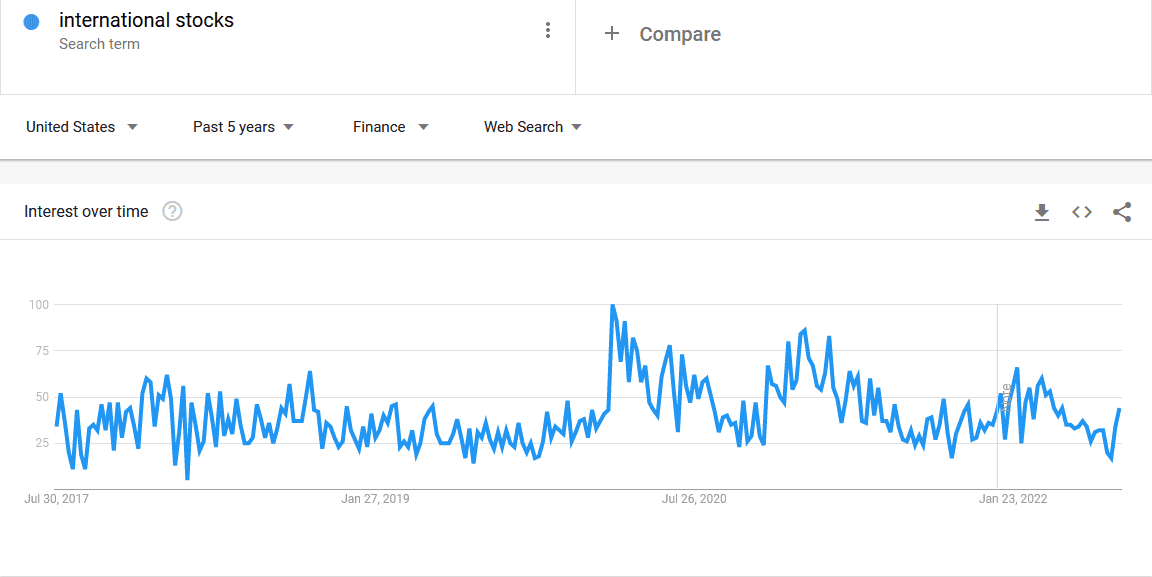
*Data via Google Trends as of 7/28/22
In our previous post, we covered some of the nuances pertaining to global stocks and their overlap with domestic stocks while looking at ACWI. One interesting note as it relates to ACWX is the fact that the fund only has a 38% weighted overlap with the ACWI (Global), despite 91.3% of ACWX’s holdings that are also a component of the ACWI. This points to the dominance that domestic equities hold in regard to weight within the global equity markets. For investors in the United States, ACWI is a “global” product, which includes the U.S. ACWX is an “international” product, which excludes the U.S.
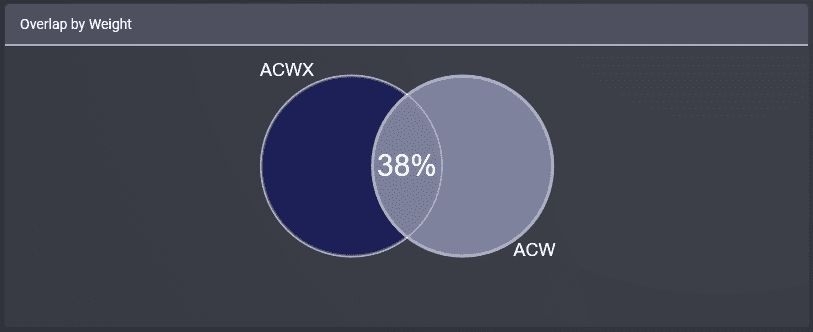
What is noteworthy about the top 10 holdings compared to ACWI is that there is a significantly smaller percentage in the top 10 for ACWX—11.07% compared to ACWI’s 15.39% weighting. Note that the S&P 500 has a 27.39% weighting¹ in its top 10 holdings. Compared to either the ACWI or the S&P 500, the single stock risk is more muted due to the smaller weight in the top ten holdings for ACWX. Additionally, there is only one stock (Taiwan Semiconductor) that overlaps with ACWIs top ten and is ACWX’s largest holding at 1.78% of the fund vs. AAPL’s 3.99% weight in ACWI.

*Data via fundvisualizer.com as of 6/30/22
Regarding sector weights, there are two notable overweights that stand out—Basic Materials at 7.97% vs. 4.57% and Financial Services at 20.19% vs. 15.58%, and one material underweight—Technology at 11.10% vs. 19.41%.
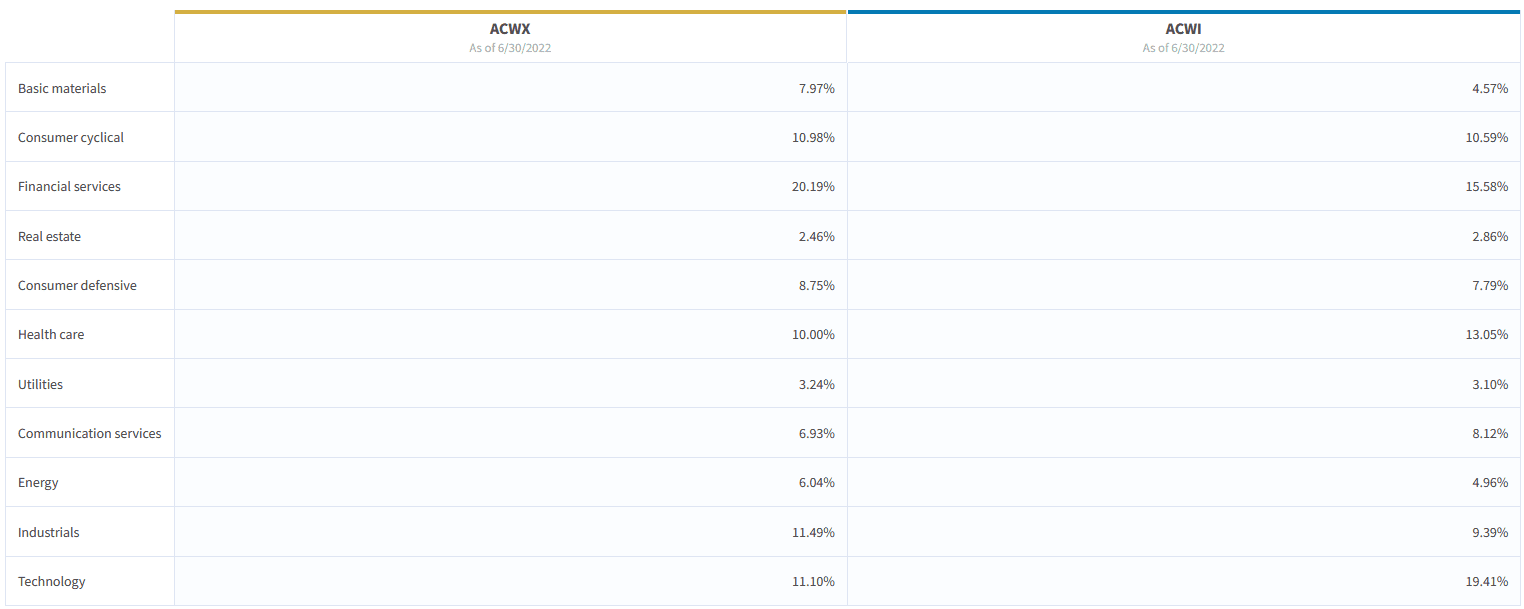
*Data via fundvisualizer.com as of 6/30/22
From a returns-based perspective, the obvious difference in the discrepancy between the heavy tilt towards developed and emerging international markets appears the most magnified, with over 72% of ACWX closely tied to the movements in international developed stocks, along with an emerging market exposure of nearly double that of ACWI.

Since 2009, it’s been no secret that international stocks have struggled relative to domestic, and this glaringly shows up in comparative performance with ACWX and ACWI. International stocks have outperformed global stocks in just three of the last fourteen years: 2009, 2012, and 2017. Note that over 61% of ACWI’s holdings are US-based².
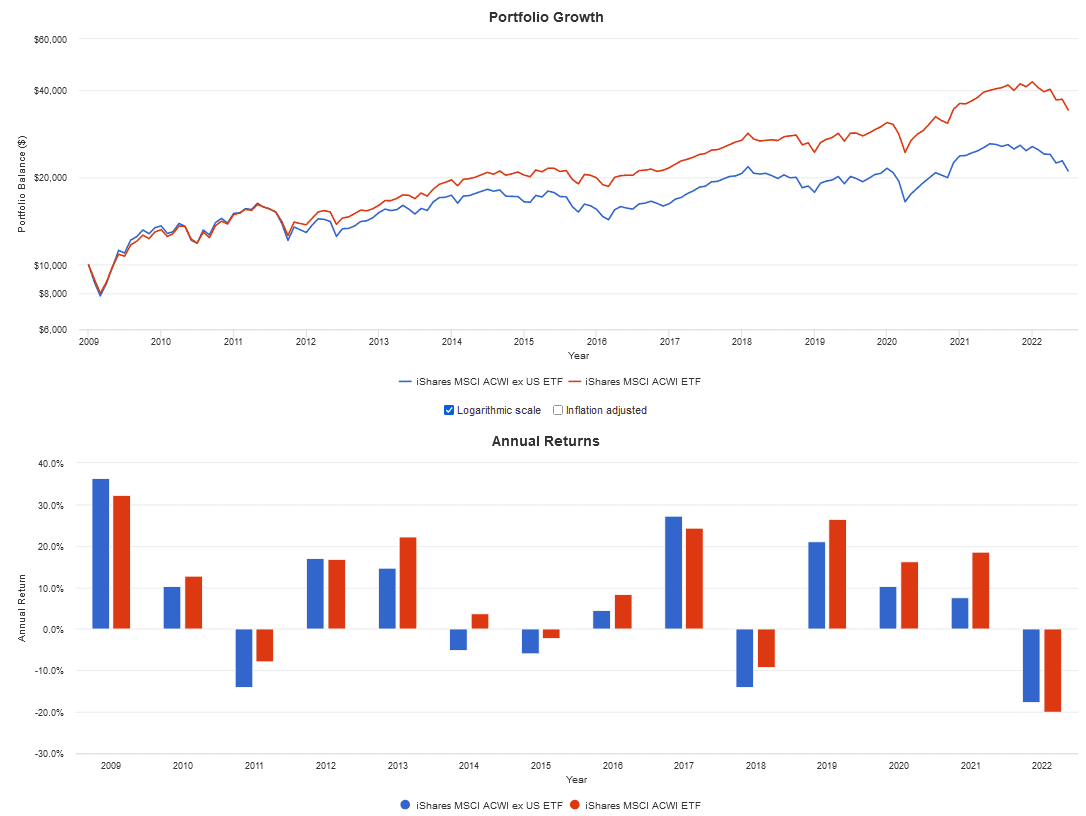
*Data via portfoliovisualizer.com as of 6/30/22
Adding to the lack of consistent outperformance on the part of international stocks is that drawdowns have historically been worse than that of ACWI’s global orientation, with the standout being the November 2016 -12.46% drawdown for ACWX compared to ACWI’s -1.50%.
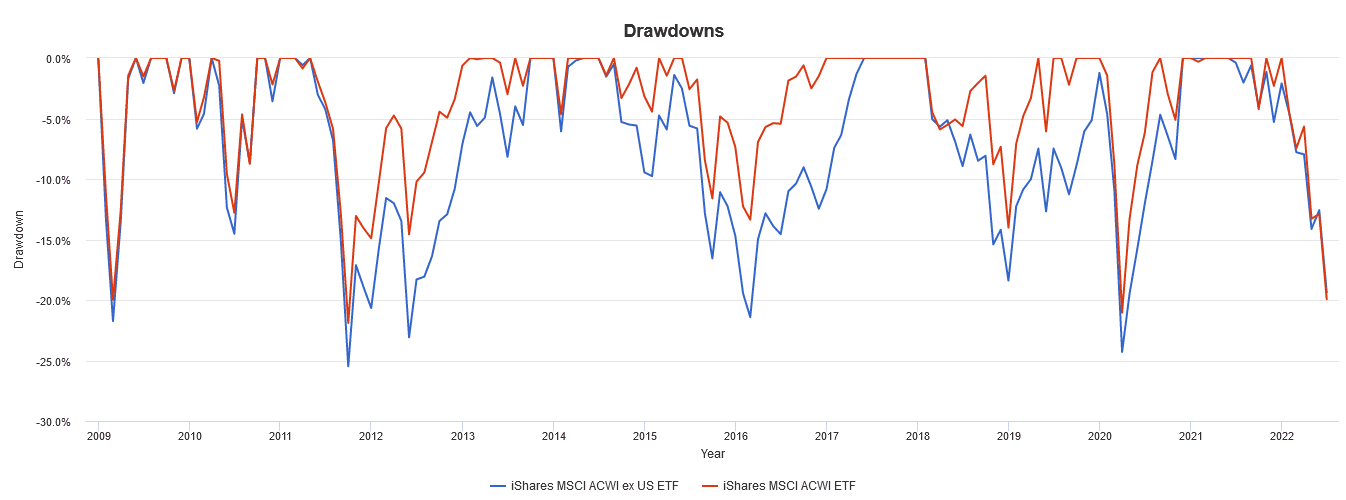
*Data via portfoliovisualizer.com as of 6/30/22
Deeper declines and a lack of outperformance haven’t been the only marks against ACWX, as the fund has historically carried a higher Beta of 1.05, negative annualized Alpha, and a Sharpe ratio nearly half that of ACWI at 0.38 vs. 0.62. Unfortunately for international investors, they have not been paid to take the risk in this space over this timeframe.

*Data via portfoliovisualizer.com as of 6/30/22
Despite the recent strength in many of the domestic indexes having recovered their 50-day moving averages to the upside, ACWX has struggled to maintain any material ground above the indicator all year long. Additionally, the fund trades below resistance at the $46 zone. Relative to ACWI, the ACWX appears to be trying for a relative bottom as it trades below the ratio’s declining 50-day moving average. While this could very well be the zone where international stocks make a valiant attempt for a comeback from outperformance, the ball remains with the bears until the long-term trend of underperformance can be reversed.
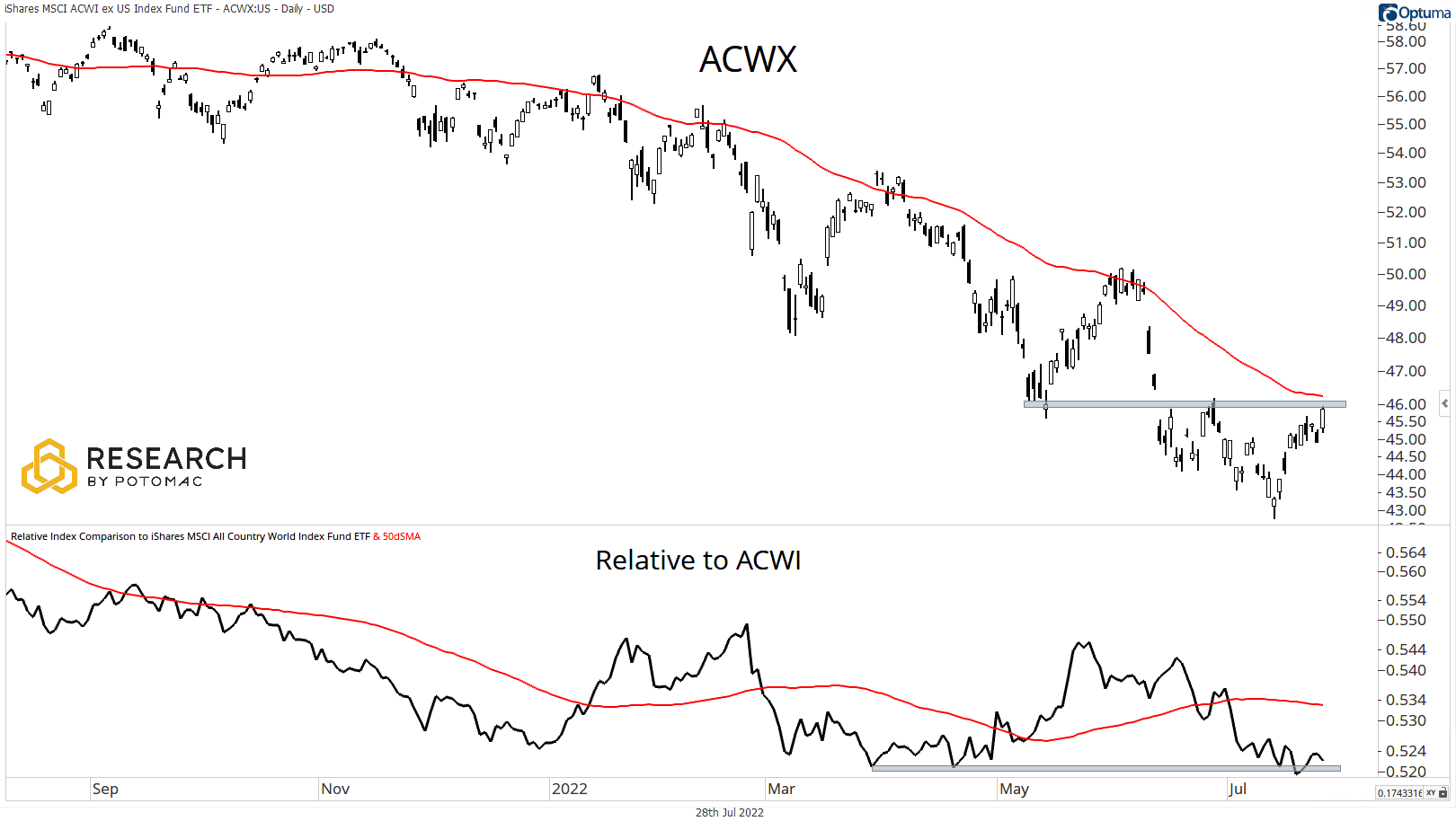
Disclosure: This information is prepared for general information only and should not be considered as individual investment advice nor as a solicitation to buy or offer to sell any securities. This material does not constitute any representation as to the suitability or appropriateness of any investment advisory program or security. Please visit our FULL DISCLOSURE page.
